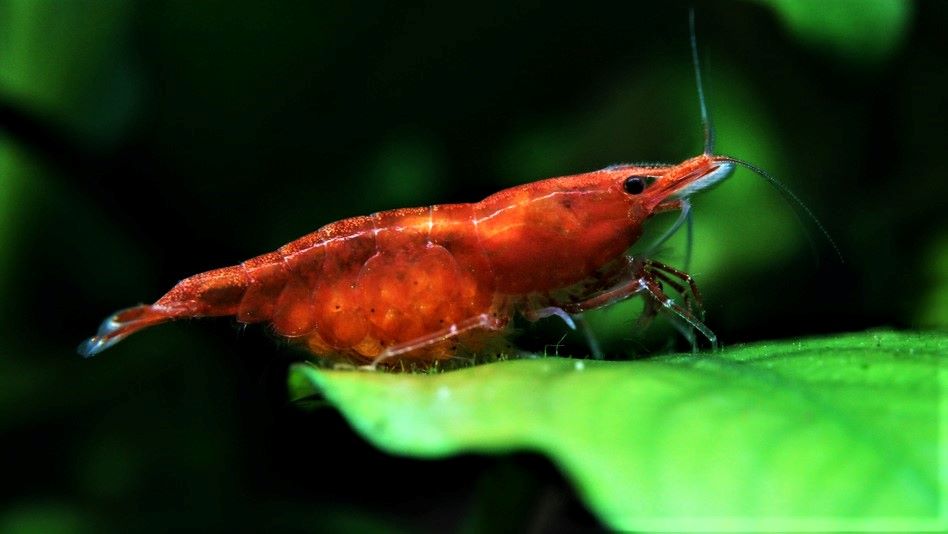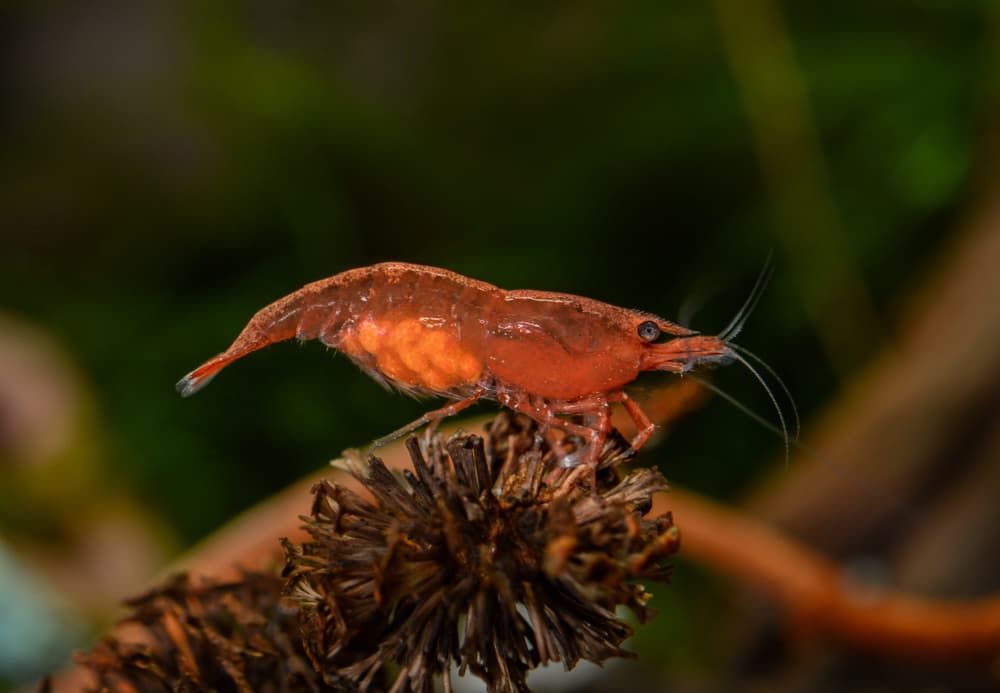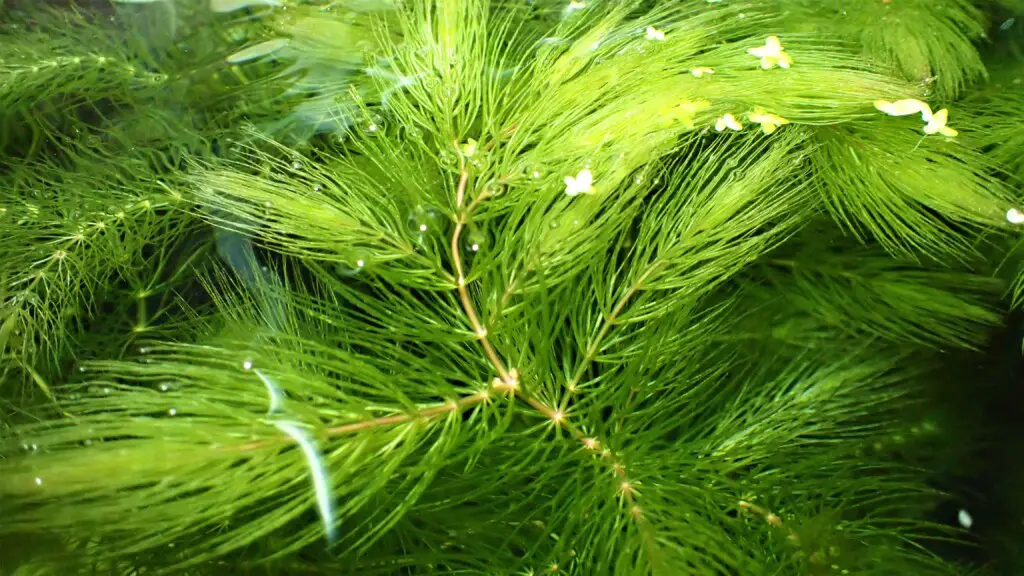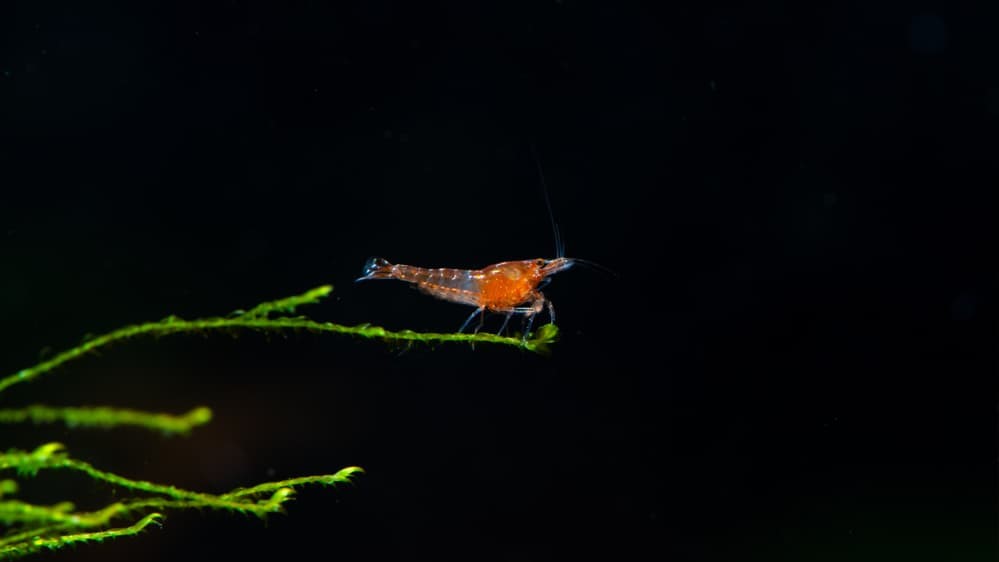You’ve been observing your cherry shrimp for a while and noticed something different. Its abdomen seems slightly larger than usual, and you can’t help but wonder, “Is my cherry shrimp pregnant?” This is a common question among shrimp hobbyists, especially those who are new to the world of shrimp keeping. For instance, let’s say you’ve noticed that one of your cherry shrimps, which you’ve affectionately named “Cherry”, has been acting a bit odd lately. She’s been hiding more, eating more, and her belly looks unusually swollen. Could Cherry be expecting some tiny shrimplets?
Yes, your cherry shrimp could indeed be pregnant. If you notice that her abdomen, specifically the underbelly area, is larger than usual and appears to be carrying small, greenish eggs, congratulations! This is known as being “berried” in shrimp-keeping circles, and it’s a clear sign that your shrimp is carrying eggs. Remember, shrimp pregnancy is a delicate time, so make sure to provide optimal conditions for your expectant shrimp.
When I first started my shrimp-keeping journey about 20 years ago, I was as green as the algae my shrimps loved to munch on. One of the most exciting yet challenging aspects I encountered early on was figuring out if my cherry shrimps were pregnant. I remember the first time I noticed my shrimp, Cherry, acting a bit strange.
She was hiding more, eating voraciously, and her belly seemed to be growing by the day. I was filled with a mix of excitement and apprehension. Was Cherry pregnant? Or was something wrong?
Over time, and with a lot of observation and research, I learned to identify the signs of a pregnant cherry shrimp. The first time I saw those tiny, greenish eggs under Cherry’s belly, I was over the moon!
But then came the next challenge: ensuring Cherry and her soon-to-be shrimplets had the right conditions to thrive. I had to learn about optimal water parameters, the right diet, and how to provide a safe environment for the babies.
Fast forward to today, and I’ve successfully navigated through multiple thousand shrimp pregnancies. Each one is a unique experience that adds to my knowledge and passion for shrimp keeping. In this post, I’ll share what I’ve learned about identifying and caring for pregnant cherry shrimps. So, if you’re wondering whether your cherry shrimp is pregnant, you’re in the right place. Let’s dive in!

What Are the Signs of a Pregnant Cherry Shrimp?
Identifying a pregnant cherry shrimp, or any shrimp for that matter, can be a bit tricky if you’re not familiar with what to look for. However, once you know the signs, it becomes a lot easier. Here are some key indicators that your cherry shrimp is carrying eggs:
- Swollen Abdomen: The most obvious sign of a pregnant cherry shrimp is a swollen abdomen. This is where the shrimp carries her eggs. You’ll notice that the underbelly of the shrimp is larger than usual, and it might even look like it’s bulging.
- Greenish Eggs: If you look closely, you might be able to see small, greenish eggs in the shrimp’s abdomen. These are the developing eggs, and their green color comes from the yolk inside them.
- Behavioral Changes: Pregnant cherry shrimps often exhibit changes in behavior. They might become less active, hide more often, and eat more than usual. This is because they’re preparing for the arrival of their shrimplets and need extra energy.
- “Berried” Appearance: In shrimp-keeping circles, a pregnant shrimp is often referred to as a “berried” shrimp. This is because the eggs in the shrimp’s abdomen look like tiny berries. If your shrimp looks “berried,” then it’s very likely pregnant.
Each shrimp is unique, and not all will exhibit these signs in the same way. It’s always a good idea to observe your shrimp closely and regularly to understand their normal behavior and spot any changes.

How Long Does a Cherry Shrimp’s Pregnancy Last?
The gestation period of a cherry shrimp, or the time it takes for the eggs to develop and hatch, is typically around 30 days. However, this can vary slightly depending on several factors, including the temperature of the water in your aquarium.
In warmer water, the eggs may hatch a bit sooner, sometimes in as little as 20 days. On the other hand, in cooler water, the process might take a bit longer, up to 35 days or so. It’s important to note that drastic changes in temperature can stress your shrimp and potentially harm the eggs, so it’s best to keep your aquarium at a steady, suitable temperature.
During this period, the female shrimp will carry the eggs under her abdomen, constantly fanning them with her swimmerets to provide oxygen and prevent fungus or bacteria from developing. Once the eggs are ready to hatch, tiny shrimplets will emerge and immediately start their independent life in the aquarium.
Patience is key during this time. It can be exciting to anticipate the arrival of new shrimplets, but it’s important to let nature take its course and avoid any unnecessary interference that could stress your pregnant shrimp.

How Can I Provide the Best Environment for My Pregnant Cherry Shrimp?
Creating a safe and comfortable environment for your pregnant cherry shrimp is crucial to ensure the successful development and hatching of the eggs. Here are some key factors to consider:
- Water Parameters: Cherry shrimps thrive in clean water with a pH level between 6.5 and 8.0, a temperature between 70 and 75 degrees Fahrenheit (21-24 degrees Celsius), and a GH (general hardness) between 4-8. Regularly check these parameters and make sure they remain stable.
- Diet: A balanced diet is essential for a pregnant shrimp. Provide a variety of foods, including high-quality shrimp pellets, blanched vegetables, and algae wafers. This will ensure she gets all the necessary nutrients for herself and her developing eggs.
- Hiding Spots: Pregnant shrimps often prefer to hide, especially when they’re close to hatching their eggs. Provide plenty of hiding spots in your tank using plants, rocks, or shrimp caves.
- Avoid Stress: Try to minimize any stressors for your pregnant shrimp. This includes avoiding sudden changes in water parameters, overfeeding, or overcrowding in the tank.
- Tank Mates: Ensure that the other inhabitants of your tank are shrimp-friendly. Some fish species can be aggressive and may stress or harm your pregnant shrimp.
By providing a suitable environment and taking care of these factors, you can increase the chances of your pregnant cherry shrimp successfully hatching her eggs. Remember, each shrimp is unique, and observing your shrimp’s behavior can provide valuable clues about her needs and comfort.

What Should I Do After My Cherry Shrimp Gives Birth?
Once your cherry shrimp has given birth, you’ll find yourself with a tank full of tiny shrimplets. Here’s what you should do to ensure their survival and growth:
- Don’t Disturb: The first rule is to avoid any unnecessary disturbance in the tank. Shrimplets are extremely sensitive to changes in their environment, so it’s best to minimize any tank maintenance activities for the first few days after birth.
- Provide Food: Shrimplets will start feeding almost immediately after they’re born. They typically eat the same food as adult shrimps, but in smaller quantities. You can crush shrimp pellets into a fine powder to make it easier for them to eat. Also, having a good supply of biofilm in your tank is beneficial as it’s a natural food source for shrimplets.
- Ensure Good Water Quality: Maintaining optimal water parameters is even more crucial now. Shrimplets are more sensitive to poor water conditions than adult shrimps. Regularly test your water to ensure it’s within the suitable range for cherry shrimps.
- Watch Out for Predators: If there are other fish in your tank, keep a close eye on them. Some fish may see shrimplets as a tasty snack. If this becomes a problem, you might need to consider separating the shrimplets until they’re larger.
The goal is to create a safe and nurturing environment for your shrimplets to grow. With proper care and attention, you’ll soon have a thriving colony of cherry shrimps in your tank.
Summary
In a nutshell, identifying a pregnant cherry shrimp and caring for her before, during, and after her pregnancy is a rewarding part of the shrimp-keeping journey. It requires patience, observation, and a commitment to providing the best possible environment for your shrimp. From spotting the first signs of pregnancy to celebrating the arrival of tiny shrimplets, each stage offers its own unique joys and challenges.
Ultimately, the key to successful shrimp keeping is understanding your shrimp’s needs and behaviors. This comes with time, experience, and a lot of love for these fascinating creatures.
Lastly, remember that you’re not alone in this journey. If you have any questions or need help, don’t hesitate to reach out. If you can’t reach me here, check out the “Aquarium Shrimp Keeping” group on Facebook. It’s a wonderful community of shrimp enthusiasts who are always ready to share their knowledge and experiences.
On a final note, I wish you all the best in your shrimp-keeping adventures.
Happy Shrimp Keeping!
Frequently Asked Questions
Q. How do you know if cherry shrimp are pregnant? A. The most prominent sign of a pregnant cherry shrimp is a swollen abdomen, where the shrimp carries her eggs. If you look closely, you might see small, greenish eggs in the shrimp’s abdomen. Changes in behavior, such as increased hiding and eating, can also indicate pregnancy.
Q. How long are cherry shrimp pregnant for? A. The gestation period of a cherry shrimp is typically around 30 days. However, this can vary slightly depending on several factors, including the temperature of the water in your aquarium.
Q. How do you know if shrimp are berried? A. A “berried” shrimp is a term used in shrimp-keeping circles to describe a pregnant shrimp. The eggs in the shrimp’s abdomen look like tiny berries, hence the term. If your shrimp’s abdomen is swollen and you can see small, greenish eggs, then your shrimp is likely berried.
Q. How do you tell if a shrimp is laying eggs? A. When a shrimp is laying eggs, you’ll notice her abdomen is swollen and she may be less active than usual. If you look closely, you might see her releasing the eggs into her abdomen, where they will be fertilized and carried until they hatch.
Q. Should I separate pregnant cherry shrimp? A. It’s usually not necessary to separate a pregnant cherry shrimp unless the tank is inhabited by aggressive fish or other creatures that might harm the shrimp or her eggs. Shrimps are generally peaceful and will not harm their own kind. However, if you notice any signs of stress or danger, it might be a good idea to provide a separate, safe space for the pregnant shrimp.
